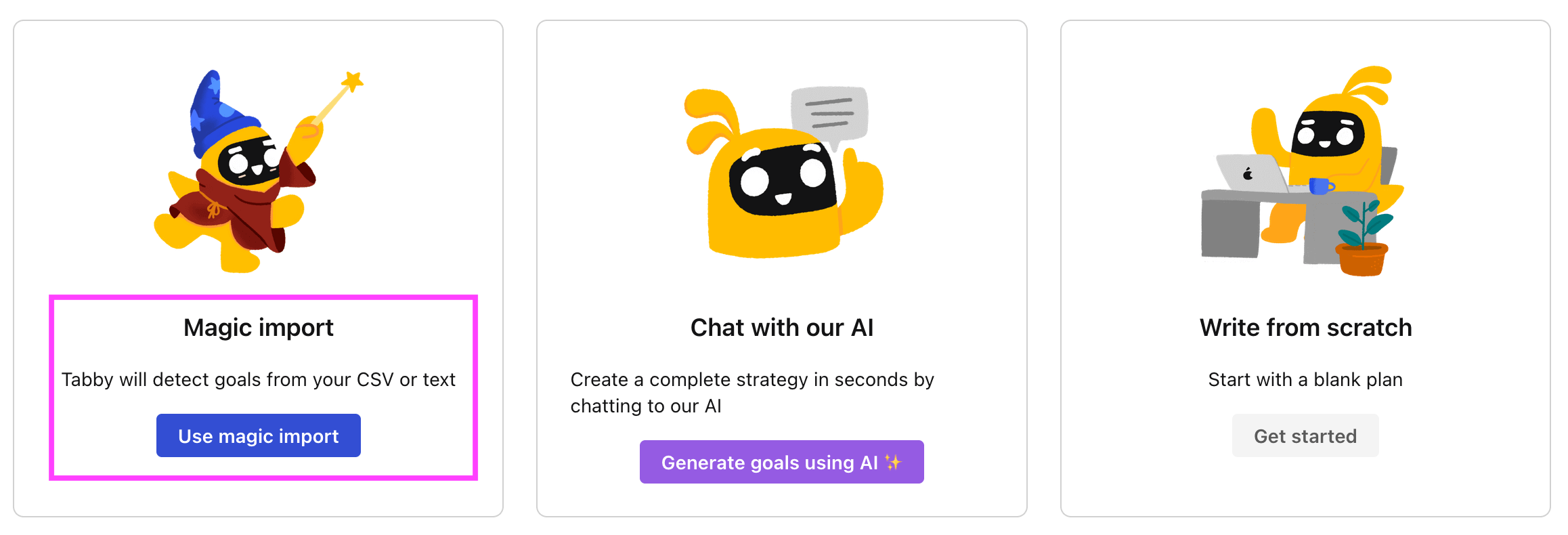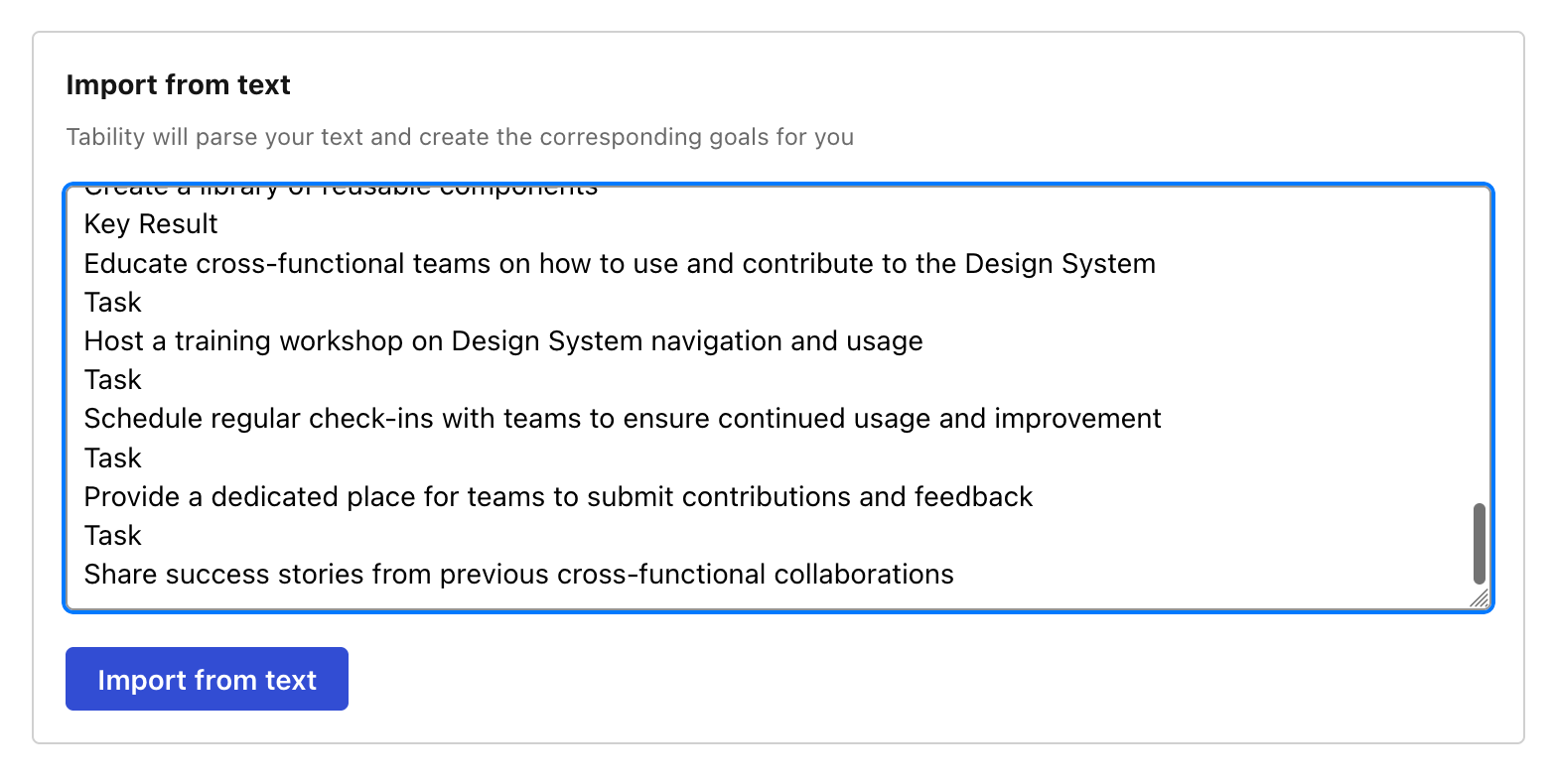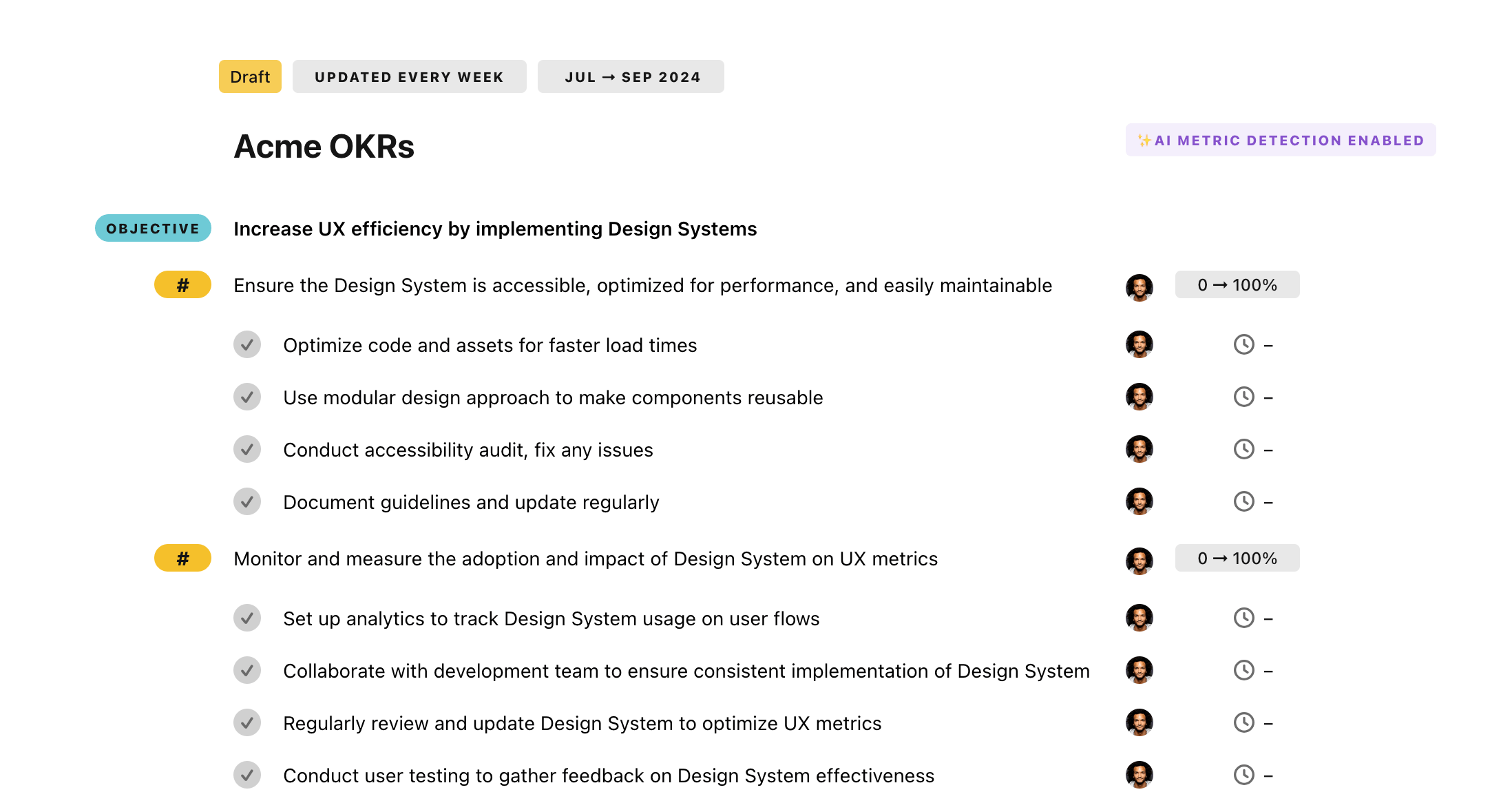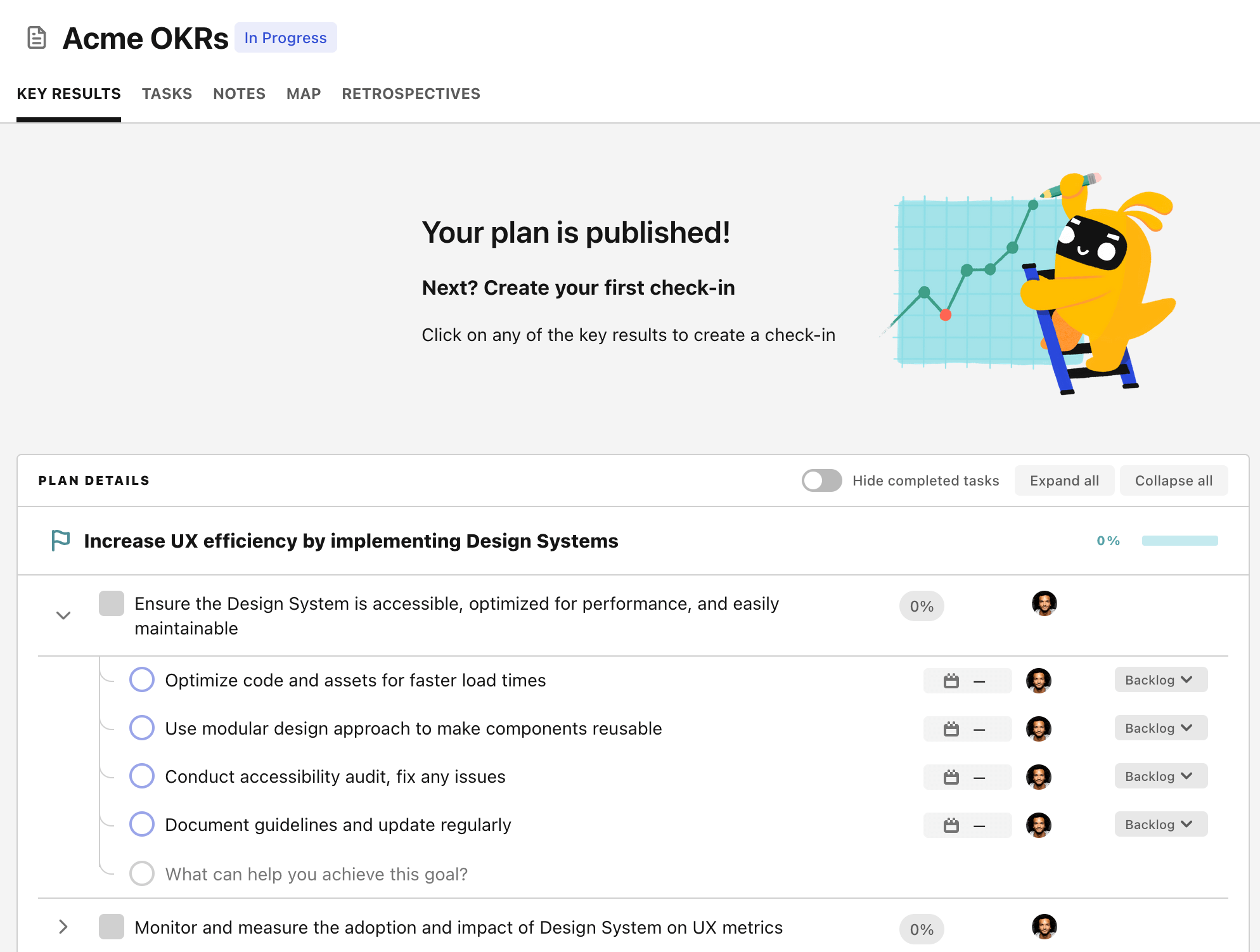OKR template to launch an effective project management tool
Your OKR template
The second objective targets finalizing the tool design and its functionality by the 6th week. It encompasses a thorough review for any flaws in the existing tool design followed by essential updates. Setting a 6th week deadline inspires urgency to finalize the tool design.
The last objective aims for a 90% user satisfaction rating within the first month post-launch. Preserving a high user satisfaction rate is pivotal implying the quality and utility of the tool. The initiatives enlisted entail offering swift and consistent customer support, incorporating user feedback in updates speedily, and maintaining clear communication with the users.
As a conclusion, launching an effective project management tool focuses on superior user experience. Such would be achieved through comprehensive testing, design and functionality finalization, and enforcing a high user satisfaction rate.
ObjectiveLaunch an effective project management tool
KRComplete user testing and rectify issues by end of week 9
Implement solutions and ensure all issues are resolved by week 9
Develop solutions to rectify identified user issues
Identify any remaining issues through comprehensive user testing
KRFinalize tool design and functionality by end of week 6
Review and test current tool design for functionality flaws
Update tool design based on feedback
Finalize tool design by week 6 deadline
KRAchieve 90% user satisfaction rating within the first month of launch
Provide reliable and timely customer support
Incorporate user feedback in product updates rapidly
Deliver regular, clear user communication
How to edit and track OKRs with Tability
You'll probably want to edit the examples in this post, and Tability is the perfect tool for it.
Tability is an AI-powered platform that helps teams set better goals, monitor execution, and get help to achieve their objectives faster.
With Tability you can:
- Use AI to draft a complete set of OKRs in seconds
- Connect your OKRs and team goals to your project
- Automate reporting with integrations and built-in dashboard
Instead of having to copy the content of the OKR examples in a doc or spreadsheet, you can use Tability’s magic importer to start using any of the examples in this page.
The import process can be done in seconds, allowing you to edit OKRs directly in a platform that knows how to manage and track goals.
Step 1. Sign up for a free Tability account
Go tohttps://tability.app/signup and create your account (it's free!)
Step 2. Create a plan
Follow the steps after your onboarding to create your first plan, you should get to a page that looks like the picture below.

Step 3. Use the magic importer
Click on Use magic import to open up the Magic Import modal.
Now, go back to the OKR examples, and click on Copy on the example that you’d like to use.

Paste the content in the text import section. Don’t worry about the formatting, Tability’s AI will be able to parse it!

Now, just click on Import from text and let the magic happen.

Once your example is in the plan editor, you will be able to:
- Edit the objectives, key results, and tasks
- Click on the target 0 → 100% to set better target
- Use the tips and the AI to refine your goals
Step 4. Publish your plan
Once you’re done editing, you can publish your plan to switch to the goal-tracking mode.

From there you will have access to all the features that will help you and your team save hours with OKR reporting.
- 10+ built-in dashboards to visualise progress on your goals
- Weekly reminders, data connectors, and smart notifications
- 9 views to map OKRs to strategic projects
- Strategy map to align teams at scale